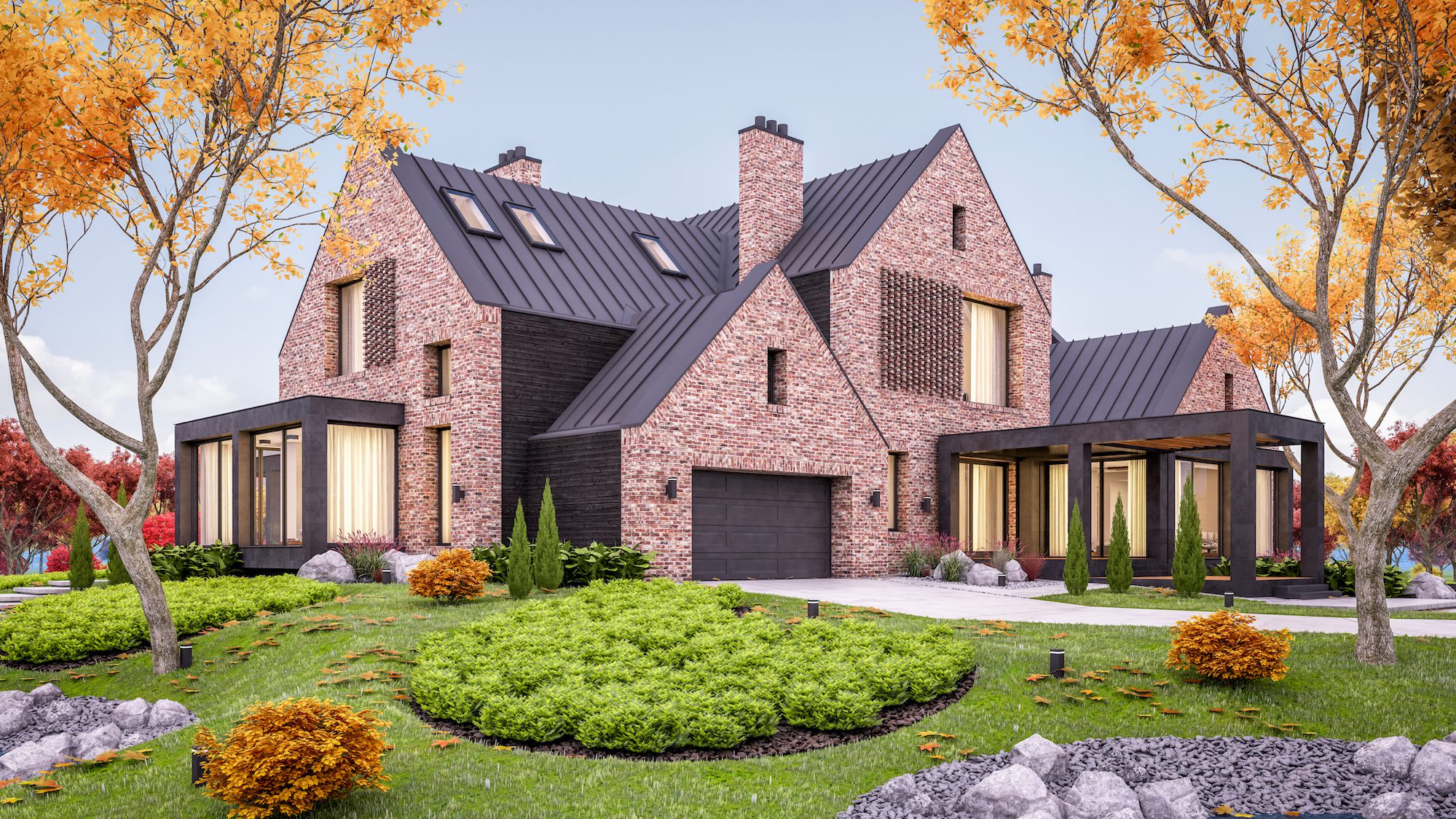
Korisbo/Getty Images
In recent years, Americans have been less interested in living in those sprawling McMansions in the suburbs, as people of all ages gravitated toward walkable urban neighborhoods. The prevailing wisdom: Who needs all that space, anyway? What does it matter if you have only 400 square feet of living space when you can just pop out of your condo or apartment and enjoy all the amenities of the city? Fascination with tiny homes and micro-apartments grew, and experts predicted those supersized homes in the suburbs would struggle to find buyers.
Then the coronavirus pandemic hit. Suddenly, small homes felt very small.
Millions of Americans were confined to their homes with their families—all the time. With kids interrupting Zoom meetings with the boss, bedrooms pulling triple duty as offices and fitness centers, and dining rooms being repurposed as online schools, itty-bitty living spaces no longer seemed to work.
Instead, COVID-19 has made those boring big homes with large backyards hot again as folks are seeking enough space to accommodate being home around the clock, say real estate experts. An extra 300 square feet for a dedicated home office never sounded so good. So, are we looking at the return of the McMansion?
“The pandemic has been long enough and deep enough that it might bring a change in collective thinking toward bigger homes,” says Sonia Hirt, an urban planning and landscape architecture at the University of Georgia in Athens. “The suburban home that was so stereotypical and boring suddenly proved itself to have benefits we’ve completely forgotten about.”
The COVID-19 crisis has certainly led some city residents with means to trade their cramped apartments and condos for single-family homes in the burbs. But the virus isn’t the only factor at play. Record-low mortgage rates are also allowing buyers to afford more home for their budgets.
Before the public health crisis, the median size of an existing (previously lived in) home purchased was 2,060 square feet, according to the National Association of Realtors® 2020 Home Buyers and Sellers Generational Trends Report. Newly built single-family homes had a median 2,291 square feet in the first quarter of 2020, according to the National Association of Home Builders.
The pandemic is likely to boost those footprints, real estate experts say. After being cooped up for months, buyers and homeowners want to “tack 500 to 1,000 square feet on top of” their previous goal, says Chris Brown, principal architect at b Architecture Studio in Winchester, MA, outside of Boston.
Americans are seeking more space—but not McMansions
Americans may want more space, but that doesn’t mean the 5,000-square-foot McMansions of the 1980s and 1990s are back. Many folks don’t want to deal with the sticker price—or the upkeep.
Instead, millennials who remember the financial pain of the Great Recession are likely to make more reasonable trade-ups. They may go from an 800-square-foot condo to a 1,500-square-foot home, or sell their three-bedroom, 2,000-square-foot house and buy a five-bedroom, 3,000-square-foot abode.
Folks are also finding ways to repurpose the homes they already have, says Brown. An unfinished basement can become a fitness center, an attic could be transformed into a bedroom or play space with the addition of skylights and windows. Homeowners are also building additions, like offices.
“The market is not being driven by people looking for massive homes,” says Ken Perlman, managing principal at John Burns Real Estate Consulting. “It’s being driven by people looking for the right combination of functionality and price.”
Multigenerational families could drive demand for larger homes
Families may also need more space to accommodate adult relatives moving in because of the pandemic.
Many college students and 20-somethings are returning to the nest as colleges have closed and entry-level jobs have dried up. Meanwhile, many folks have pulled their vulnerable parents out of nursing homes or assisted-living facilities, which have been ravaged by COVID-19. All of those extra people need places to sleep.
“We’re going to see another bump in multigenerational living,” says Donna Butts, executive director of Generations United, a Washington, DC–based multigenerational advocacy organization.” By combining resources, they can afford a bigger house or a more comfortable lifestyle.”
It happened during the Great Recession, when the number of multigenerational households swelled by more than 10% from 2007 to 2011, according to a 2011 survey from Generations United.
Whether larger homes are just a passing fad or here to stay may depend on the length of the pandemic. When a vaccine is found and folks can go out and about again, these bigger homes may fall back out of favor. But if the crisis drags on for years, the change in housing preference could be more permanent.
“I don’t think the 5,000 square feet will be as fashionable and popular as it was in the ’80s and ’90s,” says professor Hirt. However, “there will be some shift.”
The post Big Homes Had Fallen Out of Favor—Then Came the Coronavirus Pandemic appeared first on Real Estate News & Insights | realtor.com®.
source https://www.realtor.com/news/trends/bigger-homes-pandemic/
No comments:
Post a Comment